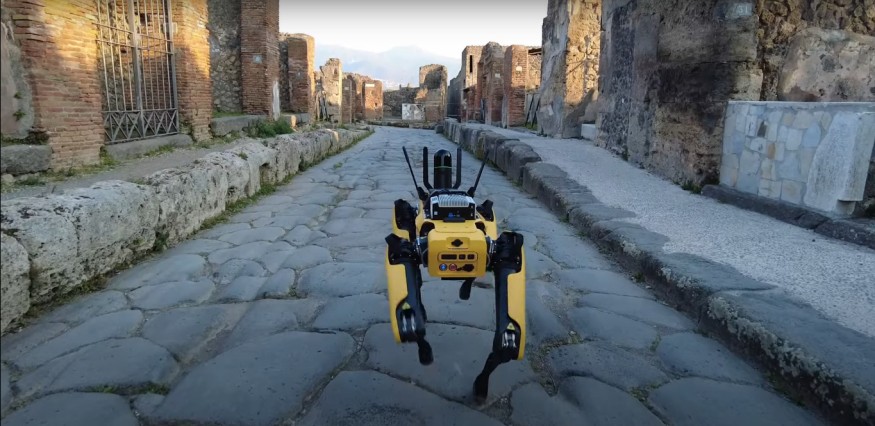Pompeii recently hired a new guard dog to protect their archaeological site. The four-legged machine, called Spot, was the chosen individual tasked to inspect the location.
Among the areas that Spot will cover are the Italian city's ancient tunnels and streets. Pompeii's engagement with the robot is to investigate and protect the place from intruders and thieves interested in the site's relics.
New Robot Guard Dog Protects Ancient Pompeii Streets

The robotic guard dog Spot patrols the little streets of Pompeii whenever the place is closed from visitors and during the nighttime. The machine is being monitored remotely by a team of experts who are frequently at off-site stations.
Spot's job in Pompeii recently became interesting, as the robot was required to investigate a particular tunnel hole in the city that illegal relic hunters probably created. Deeds carried out by these hunters disrupt the originality of the site and destroy even the structural designs built throughout the area.
Spot's remote control and live feed function are also beneficial for the human authorities in Pompeii, as they could help them do their responsibilities without being exposed to the dangers at night.
Scholars developed Spot from MIT's Boston Dynamics. The robot is equipped with specialized sensors and cameras that could broadcast real-time events as it patrols across Pompeii.
Spot could fit in tight spaces, unlike other moving robots. This provides the machine a big advantage in recording and collection of data, even from structural issues and other safety present on the site.
Pompeii is an ancient city famously known for being buried entirely by the thick ash that the nearby volcano Mount Vesuvius emitted thousands of years ago. The explosion occurred sometime during 79 AD.
The archaeological ruins of Pompeii were slowly excavated over many years following its initial rediscovery. Today, the size of the city stretches to approximately 440,000 square meters.
Spot by Boston Dynamics
Pompeii archaeological park director Gabriel Zuchtriegel explained in a DailyMail report that their team wants to test the abilities of Spot in underground tunnels made by illegal intruders and excavators.
Spot can function in either indoor or outdoor environments. The machine's sensors are made to detect its immediate surroundings, allowing the robot to get ahold of a mini-map of the current place it is in.
Through the mapping abilities, Spot can function and tread smoothly across an assigned perimeter without having trouble avoiding obstacles. It could also open doors and climb stairs whenever needed.
Spot can tolerate inhospitable environments, including offshore oil fields, nuclear power plants, and debris-rich construction sites.
Alongside Spot, Pompeii hired services from a flying laser scanner called Leica BLK2FLY. Other Spot variants are now being tested in tactical solutions more than archeological places, such as in the French army's military school.
Boston Dynamics founder Marc Raibert already announced that Spot would also be available soon to the public for home use.
Last year, Spot demonstrated its fast reflexes and other abilities by challenging the K-pop group BTS to a dance battle.
RELATED ARTICLE : Deep Learning Robot with Fine Motor Skills Peel Bananas Without Crushing the Fruit
Check out more news and information on Robotics in Science Times.












